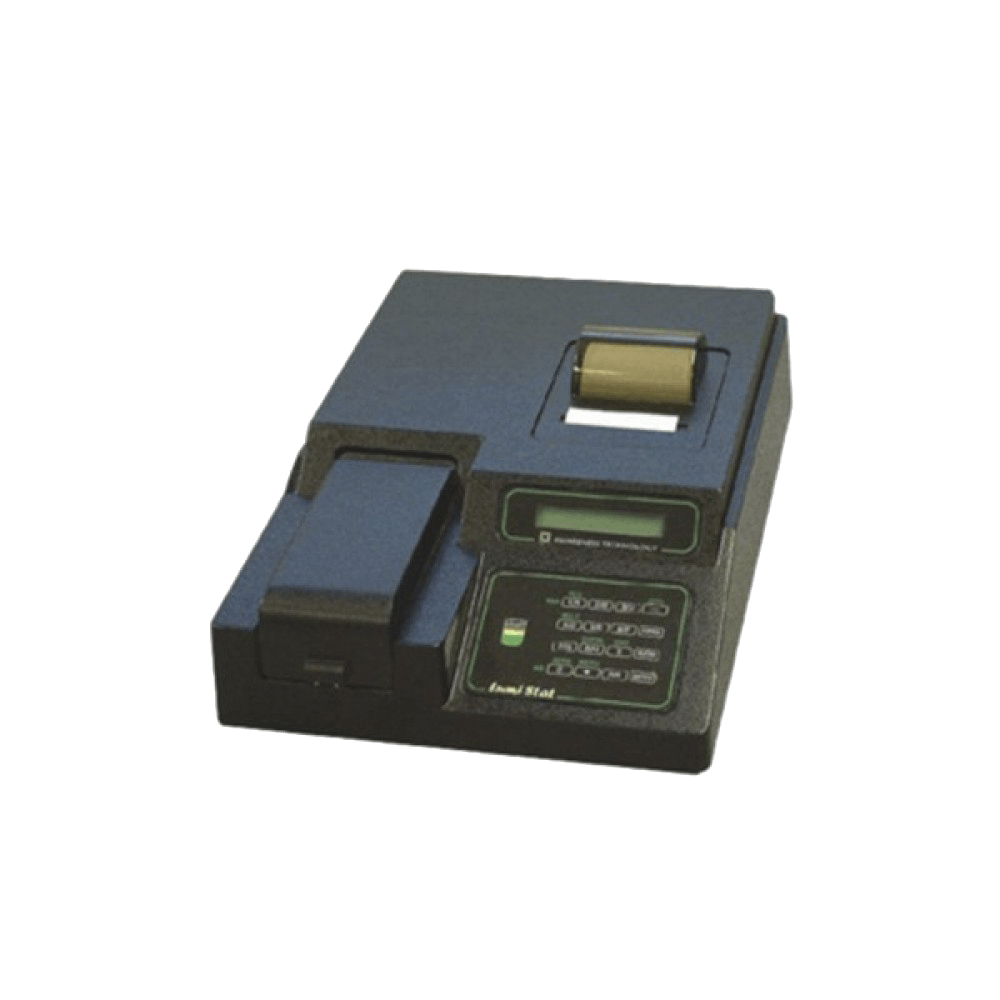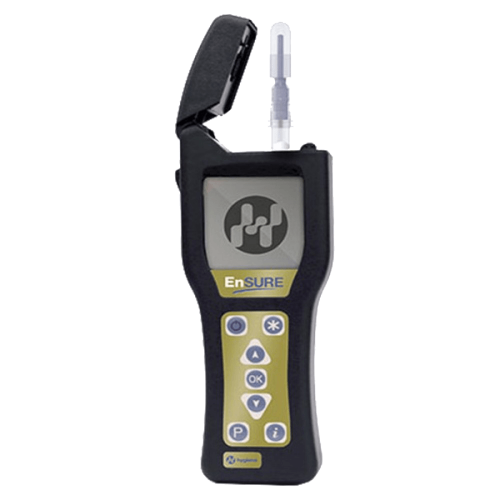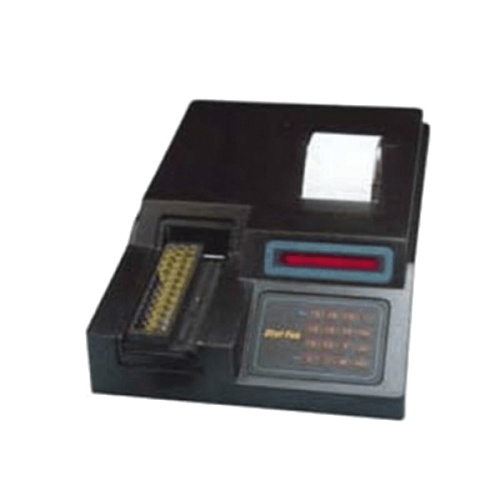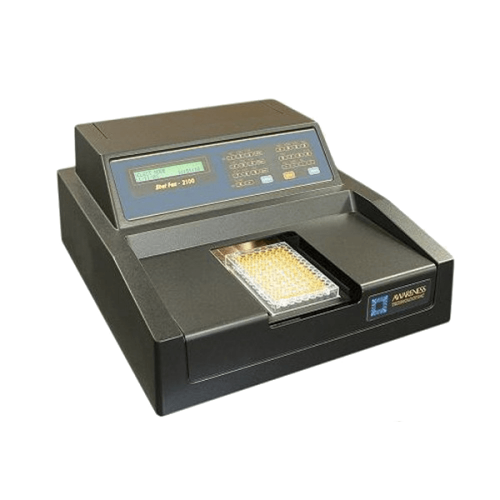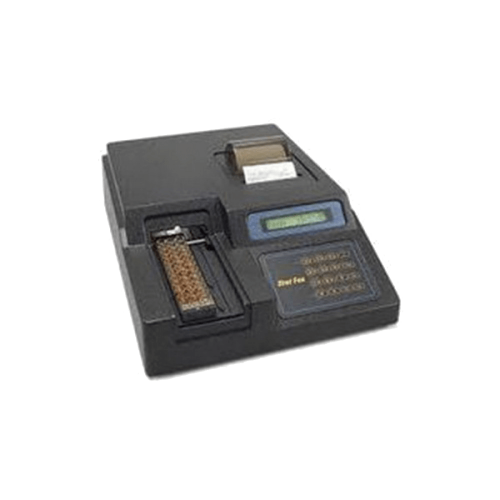Description
- First CLIA strip reader
- Wide range and high sensitivity
- Open system for a wide range of CLIA tests
- Economical, auto-zero, user-programmable
- LCD display
- Built-in thermal printer
- Analysis of three strips within 1 min
- LumiCapture SoftwareSpecifications
Sensitivity / Detection level – horseradish peroxidase 1×10-20
– alkaline phosphatase 1×10-19
– under investigation for other testsLinear dynamic range 1000000 crosstalk less than 2.5 x 0.0001 Detector photomultiplier tube (PMT) Spectral range of sensitivity 300-650 nm Peak wavelength 400 nm Detection Method luminescent glow Strip type single, double or split strips, up to 12 wells, 36 well loading capacity Carriage format common strip holder can hold three 12-well strips or three 8-well strips Speed measurement of three strips in about 1 minute Keyboard 16 membrane keys, 4×4 Display liquid crystal Built-in printer thermal, dot matrix, 20 characters per line Calculation methods multi-point calibration with regression or point-to-point curves, curve save function, relative light unit Serial port output only, 9600 bps, 1 start bit, 8 data bits, 1 stop bit, no parity, no ready Software – connection between the LumiStat luminometer and a computer
– transfer of measurement results to Excel
– creation of an archive of results
– software included in the standard deliveryFrame plastic painted with refractory enamel with metal base Power supply – 110-120 or 220-240 V, 50/60 Hz, selectable switching
– Power consumption: less than 50 W
– Fuses: two 0.5 A class T, 250 VTemperature, humidity 15 – 35°C, humidity less than 85% Dimensions, weight 23 x 30 x 9 cm, 5.9 kg Tests in progress
- Reproductive function: estradiol, progesterone, total testosterone, LH, prolactin, SHBG (sex hormone binding globulin), FSH, hCG, DHEA-SO4, unconjugated estriol, PAPP-A (pregnancy-associated protein A), androstenedione
- Thyroid group: total T3, free T3, total T4, free T4, TSH (thyroxine-binding globulin), TSH, 3rd generation TSH (supersensitive), thyroid hormone uptake test, thyroglobulin (TG), antibodies to thyrocyte peroxidase, AT- TG
- Tumor markers: CEA (cancer-embryonic antigen), PSA, 3rd generation PSA (supersensitive), free PSA, CA 125, AFP, PCF (prostatic acid phosphatase), CA19-9, CA 15-3, NMP22 (nuclear matrix proteins), beta-2-microglobulin, cytokeratin 18
- Infectious diseases: Anti-HBs, HBs Ag, HBs Ag confirmatory, Anti-HBc, Anti-HBc IgM, IgG to cytomegalovirus, IgG to rubella virus (quant.), IgM to rubella virus, IgG to toxoplasma (quant.), IgM to toxoplasma, H. Pylori IgG semi-quantitative, IgG to herpes virus I and II, total antibodies to Lyme disease (lyme borreliosis)
- Anemia: ferritin, folic acid, vitamin B12, erythropoietin
- Cytokines: interleukin-6 (IL6), IL8, IL-1b, IL2R, TNF-a (tumor necrosis factor), LBP (lipopolysaccharide binding protein)
- Cardiovascular markers: creatine kinase-MB, homocysteine, myoglobin, troponin I (Tn I), troponin T (Tn T)
- Diabetes: insulin, C-Peptide
- Drug monitoring: phenobarbital, phenytoin, carbamazepine, valproic acid, tobramycin, digoxin, digitoxin, theophylline, gentamicin, vancomycin
- Narcotic substances: cocaine, opiates, cannabinoids, nicotine metabolites, amphetamine, methamphetamine
- Analytes: C-reactive protein, cortisol, IGFBP3 (insulin-like growth factor-3 binding protein), IGF1 (insulin-like growth factor-1), gastrin, ACTH, GH, albumin
- Allergens: General IgE, IgE cat, dog, mite, food, latex, grass, animal, mold, tree, weed, ECP, Ala TOP allergy panel, eosinophilic cationic protein (ECP)
- Veterinary: T4 for dog, TSH for dog, TSH for rat

